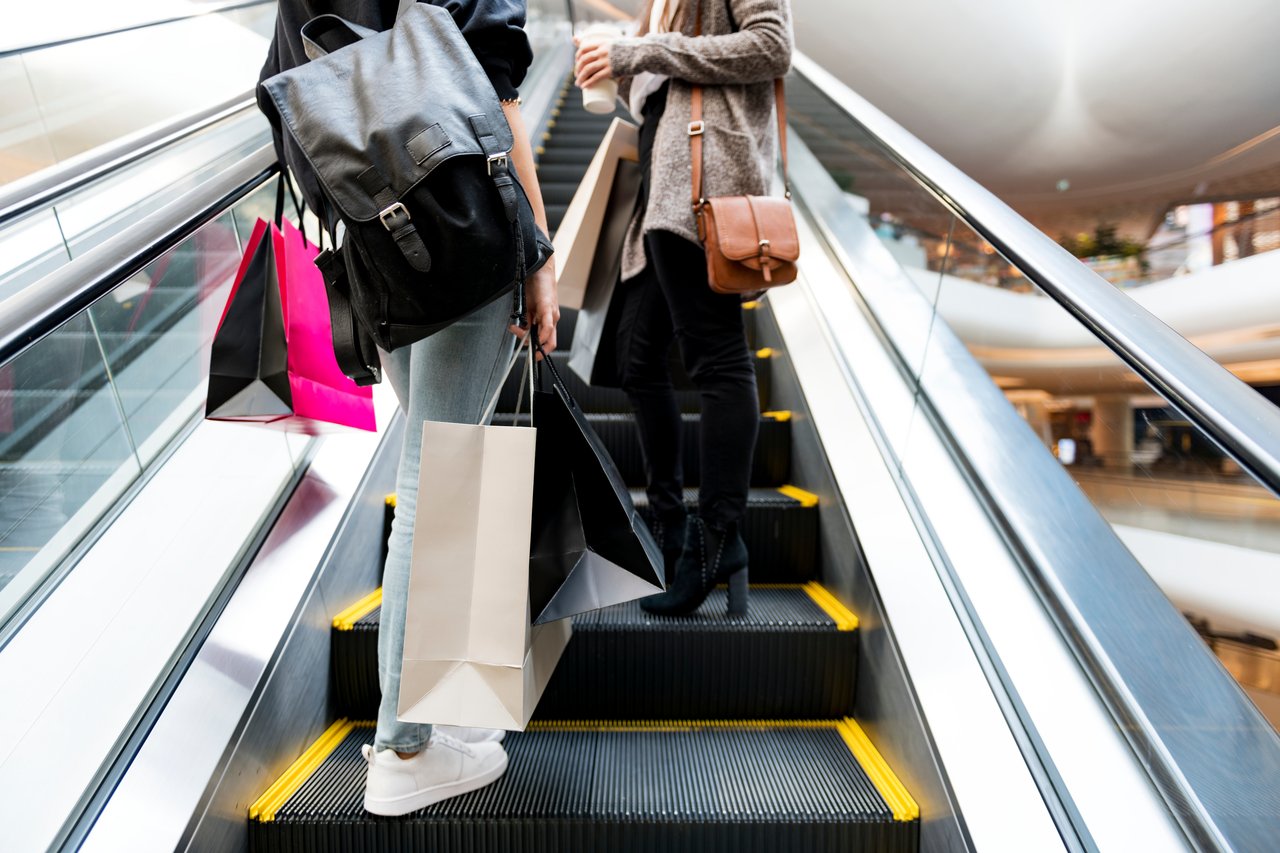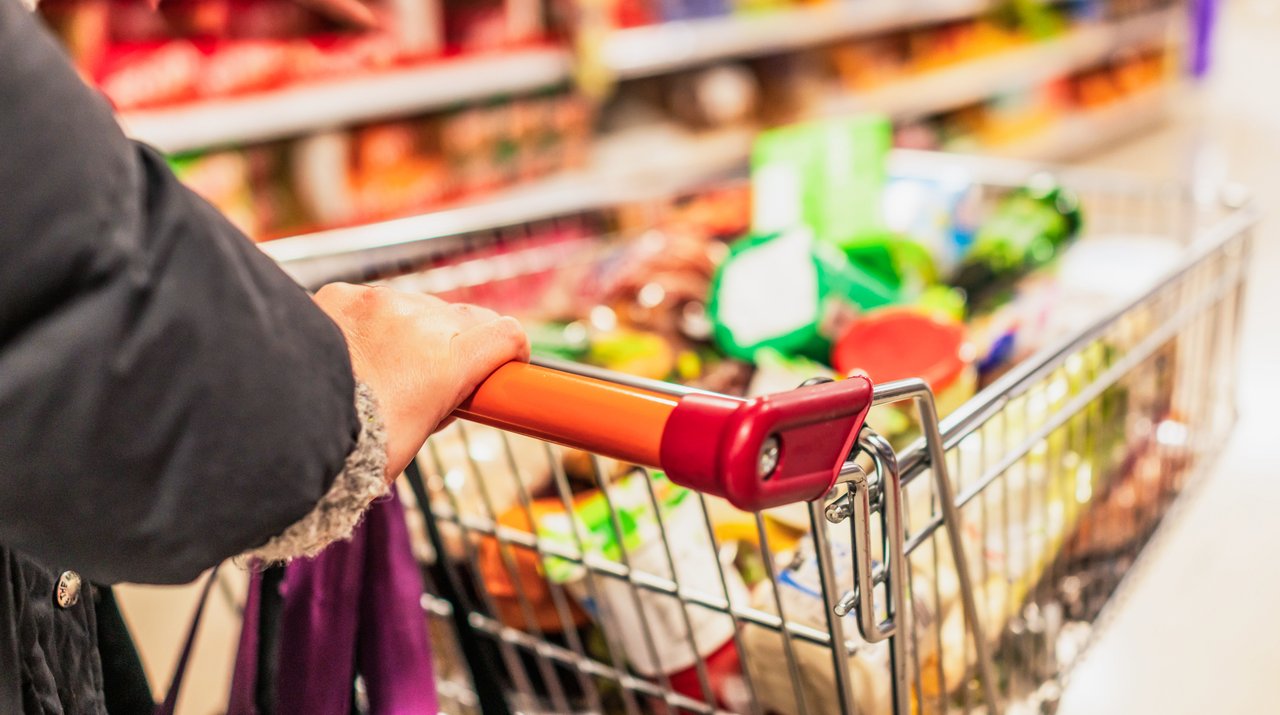Hit enter to search or Esc to close
Jazz vs. Jonny: Our key takeaways from Shoptalk Europe 2025 and questions it raises for retailers
Blog
12 min
17th July 2025

Two people with luxury shopping bags ascending the escalator in a shopping mall.
Following Shoptalk, Jazz Swift and Jonny Gatus, both directors at Newton, have been reflecting on the conference’s most inspiring insights and the critical questions for retailers to consider.
Jazz Swift’s reflections
Questions that resonated
How are retailers evolving their omnichannel strategies to reflect emotional brand identity – both in-store and online?
It seems only yesterday we were first talking about ‘omnichannel’ – but it’s nearly fifteen years (if Google Trends is to be believed) and interest is rising once more, with it being one of the hot topics of conversation at ShopTalk Europe. But I wonder, how many European retailers can genuinely say they have achieved a seamless customer journey across their online, mobile and brick-and-mortar worlds? Are they truly linking what happens on screen with what’s purchased in a shop, in service of a better experience?
While it may not be straightforward, we can all see the untapped potential. The general consensus at Shoptalk was that customer understanding holds the key to finally unlocking omnichannel’s promise. Every operational aspect – from supply chain efficiency to product availability to the design of physical spaces – should be designed to enhance the customer experience.
Once, simply making technology visible was seen as a positive statement, its presence alone demonstrating investment and commitment to the customer. The narrative has shifted. That visible tech now needs to improve the journey, making every interaction more impactful, more memorable.
This makes sense in a world where storytelling has such a positive impact. Natali Stojovic from LEGO Retail was brilliant on this, explaining how each of their stores is seen as a brand lighthouse where they create unforgettable memories and enduring connections, prioritising storytelling over selling, personal connection over conversation.
“Keep it emotional,” said Peter Wood, CEO at AllSaints. It’s a sentiment that rang true throughout the conference. Brilliant product assortment and availability alone is not enough – it needs to be brought to life. And that is just as true online as offline. How do elements like delivery, returns and after-sales care become part of that consistent brand experience?
While we can’t control exactly how customers interact with brands, we can intentionally shape how brands appear and are experienced in-store and online. Through this thoughtful and consistent building of brand across every touchpoint, will retailers finally get omnichannel for the customer right?
When will eco-conscious shopping drive more online grocery retail growth?
Just 12% of UK grocery shopping is done online (Kantar), yet there are clear advantages for consumers, being both more convenient and arguably more sustainable, offering a carbon-efficient, to-door solution with lower CO₂ emissions per unit.
So, for consumers like me that care about sustainability, what is stopping us from choosing the most environmental option for our weekly shop? It requires a lot of trust in a retailer and their operations.
A common concern among customers is that supermarket pickers select products with shorter shelf lives and lower quality than they would choose themselves. However, with the right operations, a dedicated fulfilment model for online orders should extend shelf life compared to in-store picking. Combine that with route optimisation to maximise vehicle fill and reduce mileage, and online becomes significantly more sustainable than popping to the shops.
Historically, brick-and-mortar stores investing in technology or customer/urban fulfilment centres (CFC/UFCs) has been seen as expensive. But that’s not the case any more: the costs are lower and the risks of not adapting are higher.
By making informed, data-driven decisions on technology or investments in CFCs, UFCs, dark stores or new innovative fulfilment solutions, retailers can get a clear view of end-to-end costs and opportunities. This will help them work out their ideal approach to online, as well as what and how to communicate to customers about their aims to lead in customer experience, operational excellence, and sustainability. Success hinges on a deep understanding of operations and customers across all touchpoints.

A close-up of a person’s hand pushing a full shopping cart along a supermarket aisle.
Why aren’t retailers listening to their customers in every way possible?
What if I told you that there’s an absolute treasure trove of your customer’s data available that you could use in everything from demand forecasting to designing to reducing returns? There is, and it’s a huge opportunity that most of your competitors are grappling with too.
At Shoptalk, lots of us were discussing how reviews on e-commerce platforms have the potential to provide invaluable insights into consumer behaviour. Think about a clothing brand that sells on their own platform and through third-party marketplaces: they can combine sales data and returns data with positive reviews to predict future trends, make more informed design choices around quality, sustainability, and trends. That then provides them with the information to manufacture to that demand, ensuring fewer markdowns and stock-outs. Get this right, and retailers can optimise for true E2E profitability.
Not only do retailers now have to think about how to make the most of their own data, but everything that is more widely available to them – and to their competitors. The bar of what is possible is continually rising, both in terms of what data you could be accessing, but also how you could analyse it, for instance using large language models. Data scraping may enable businesses to collect and analyse customer reviews across platforms, but it requires sophisticated algorithms and machine learning techniques to effectively process and analyse all this data.
It’s a promising avenue, and it looks like the integration of customer reviews into demand forecasting models will become standard practice – so it’s time for brands to invest.
Jonny Gatus’ reflections
Four actionable takeaways
Facing unprecedented change, retail is evolving rapidly and boldly – reimagining commercial models, and re-thinking how to drive brand value, loyalty and experience, while working to harness the power of digital and AI. What are retailers focusing on to achieve this? To navigate the strategic questions Jazz has outlined, four key themes consistently stood out at Shoptalk as guiding principles for what comes next.
1. Obsess about the customer to drive innovation
Continuously delighting customers will increasingly come down to personalisation. A powerful way to achieve this is through data-driven merchandising, curating displays based on real-time insights into local trends or seasonal preferences – all while placing product at the heart of what matters most to consumers. Customer understanding and data will be vital to making the right strategic decisions to gain that competitive edge, both for today and tomorrow.
2. Get into the details, from supply chain to shelf edge
To avoid disappointing customers, the best retailers maximise availability across all channels, ensuring the right product is available, no matter where customers choose to buy it. Achieving this means building strong supply chain resilience and optimising the flow of stock to achieve rapid fulfilment. A critical enabler is technology like RFID for real-time stock visibility and stock file accuracy.
3. Treat stores and moments as a strategic asset
The role of the physical shop is evolving, with retailers moving beyond viewing stores as transaction points, instead considering them as platforms. They’re making the floor space work harder by adding valuable services and experiences.
Future-focused retailers are creating digitally-led, personalised and integrated omnichannel experiences, connecting physical stores with digital experiences. This extends beyond the point of sale, encompassing tracking, returns, repairs and payment. All these moments are crucial for driving loyalty and delighting customers – if they are frictionless.
4. Don’t forget the value of your people
Providing store colleagues with a purpose and the tools to drive customer satisfaction is hugely powerful. But how do you ensure interventions add value to the shopper? Inspiring training is just one part of the puzzle.
Ellen Svanström spoke about how H&M uses data to build best-in-class customer experiences. Giving in-store sales teams insights on items frequently bought together online is boosting upselling and cross-selling. It’s data insights like these that help to personalise and elevate experiences, driving customer loyalty.
If you like more information please get in touch with Jazz Swift or Jonny Gatus